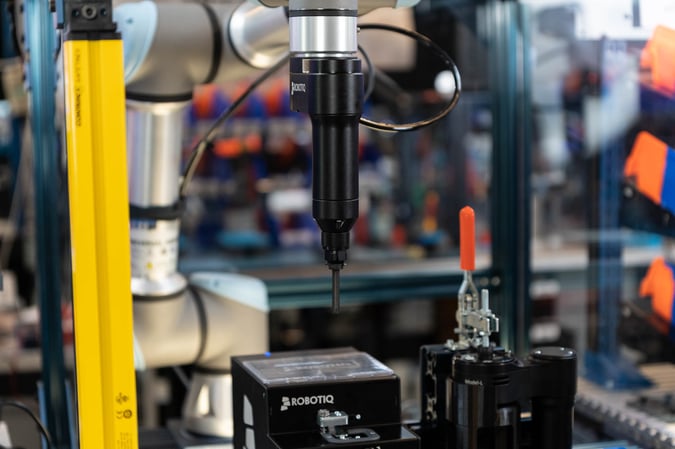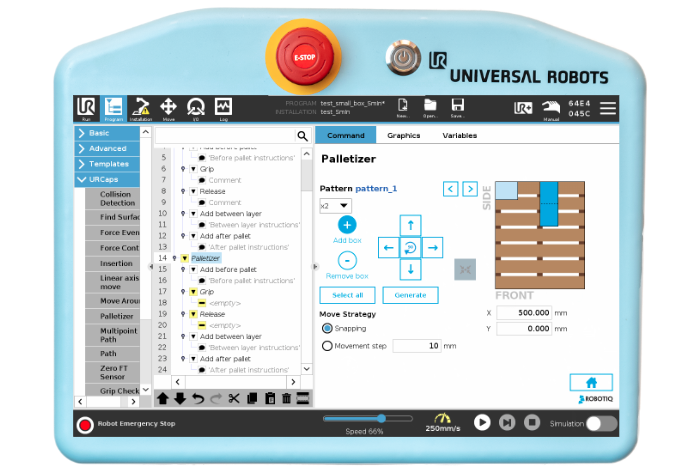7 Things to Avoid When Using Screw Assembly Automation

Posted on Mar 22, 2022 in Automation
5 min read time
Screw assemblies are extremely common in an assembly line. Over the course of a single shift, for example, operators can easily be fastening over 5,000 screws even when the number of screws per part is less than a dozen.
You might feel like you could just "throw" some automation at the problem. Maybe a conventional automated assembly machine sounds good? Maybe you're already thinking about using a robot?
We find that those people who choose screwdriving as their first robotic application tend to be more technically minded. If this is you, maybe you already have experience deploying robotics or at least working with automation.
Whatever your level of robotics expertise, there are a few things you would be wise to avoid when choosing screw assembly automation.
Here are 7 of the top things to look out for:
1. Trying to do too much with assembly automation
Perhaps you have some big plans for your assembly robot. You have identified a fastening task that you really want to take out of the hands of your workers. You are keen to automate it with a robot.
First, ask yourself: Is this a complex task for a robot?
As assembly experts explain "Sometimes the awesome capability and flexibility of a robot can cause a designer to over task the robot and make the work cell too complex.
Try not to do too much with your screwdriving robot, at least at first. It's much better to ace a simple application first and build on that success later.
2. Mis-sizing the robot and accessories for your task
There are a lot of robots available on the market. Some come as part of off-the-shelf application kits for automated fastening and others require you to deploy everything yourself.
Whatever type of robotic system you choose, make sure you're using the right-sized robot and accessories for your specific screw assembly task.
One handy method for sizing any automation system is to use the acronym LOSTPED. This stands for: Load, Orientation, Speed, Travel, Precision, and Environment.
You can assess your fastening task with regards to these 7 categories. It will give you a better idea of how well a particular solution will meet your needs.
3. Adding assembly automation without your team
Perhaps the biggest mistake some companies make is to just announce automation without first getting their teams on side. This is a problem because it sets up a potential environment of mistrust from the start.
The most successful deployments of screw assembly robots are those where the teams were involved right from the start of the project.
Your team is full of people with a great amount of skill, knowledge, and expertise. When you allow them to contribute to the robot deployment, they can help you to make your assembly automation a huge success.
4. Picking the wrong end effector type for your screws
Not all screwdriving end effectors are compatible with all types of screws.
The simplest example of this is non-ferromagnetic screws. Many robotic fastening systems use magnetic screwdriving tools to keep the screws fixed to the end of the robot's end effector. If your fixings aren't ferromagnetic, they will likely need a vacuum screwdriving tool or another alternative.
Avoid making assumptions about what will be possible with a particular system — it's much better to just ask and be sure. With the right information, you will be sure to pick the right solution for you.

5. Using very high torque screws
Torque is a core property for any automated fastening system. You need your solution to be able to provide adequate torque or it will be unsuitable for your task.
The Robotiq Screwdriving Solution, for example, can provide between 1 N to 4 N of torque to the screws. This is perfect for most small fastening tasks. But it isn't suitable for very high torque screws.
Some screwdriving applications require much higher torque ratings than this, such as some automotive, aerospace, or shipbuilding fastening. Make sure your chosen automation solution can meet your torque requirements.
6. Cramming fastening operations into a small space
A common challenge for automated fastening systems is when all the components are squashed very close together on the workpiece. This leaves the robot with very little space to move around and can make the robot deployment complex.
Signs that your fasteners lack sufficient space include when they are fitted in deep recesses, when they are close to vertical walls, and when screws are very close together.
A good rule of thumb is to have 0.5 inches of clearance around where the head of the screw is installed. But the more space your robot has to move around, the easier it will be to automate the assembly.
7. Picking complex and/or low impact tasks
Is your assembly task actually going to be worth automating?
It's surprisingly common for engineers to choose the wrong tasks when they automate a fastening task for the first time.
In some cases, they pick tasks that are too complex to automate — setting themselves up for both a difficult deployment task and a higher chance of failure. In other cases, they choose a task that will have very little impact on their processes, making it hard for them to demonstrate a clear return on investment.
Pick a fastening task that is both high impact and simple to deploy.
Now that you know some things to avoid… how do you get started with your first screw assembly automation project?
A good place to start is to download a copy of our free eBook How to Automate a Screwdriving Cell. This guides you through the process of designing and deploying an assembly robot for your facility.
Which of these "things to avoid" would you have likely done if we hadn't told you about them? Tell us in the comments below or join the discussion on LinkedIn, Twitter, Facebook, or the DoF professional robotics community.








Leave a comment